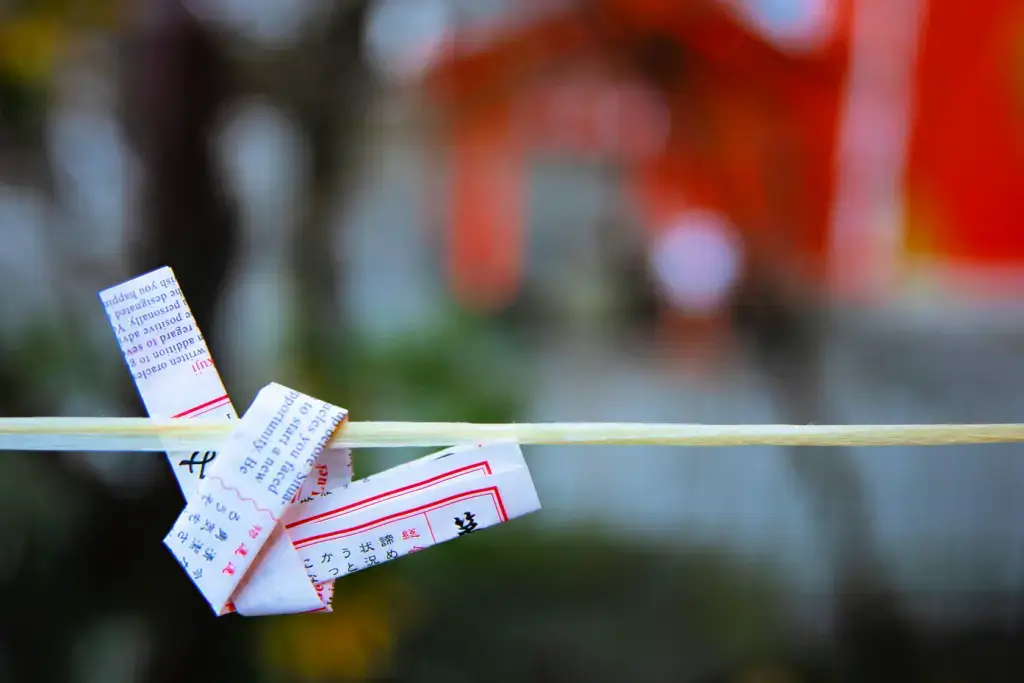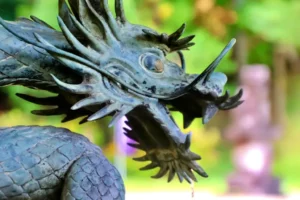The old year passes, and the new year arrives, marking a sacred time for every Japanese person. They diligently observe many wonderful traditional customs to welcome a new year of good luck and peace. One of the most common activities that must be mentioned is omikuji, the tradition of drawing a fortune slip. Let’s explore this unique custom of the Japanese people in more detail.
Table of Contents
ToggleWhat is an omikuji?
Omikuji, which means “sacred lot”, is a popular and traditional way to learn about your fortune in Japan. You can find it at Shinto shrines and Buddhist temples nationwide. This fortune tells you about your luck in different parts of life, like health, love, work, and travel. Whether good luck or bad, this tradition often includes advice to help you navigate your future! You can glimpse what might be ahead for just one to two Japanese yen coins.

One of the exciting things about omikuji is how many types there are! Some shrines offer unique ways to get your fortune, like vending machines or even robot lions in Nishiki Tenmangu Shrine in Kyoto. Plus, some also come shaped like cute animals, such as cats or birds, adding a delightful charm.
Where did this tradition come from?
Omikuji has a fascinating history that connects it deeply with Japanese culture, spirituality, and tradition. Its origins can be linked to ancient China, where similar divination practices called kau chim were used. It was introduced to Japan during Heian (794 AD-1185) and initially associated with Buddhism. The Tendai monk Ryogen is believed to have received poetic fortunes from the Bodhisattva Kannon – the Goddess of Mercy. Aristocrats and samurai first used these fortunes for guidance and later became well-known to everyone during the Kamakura period (1185-1333).
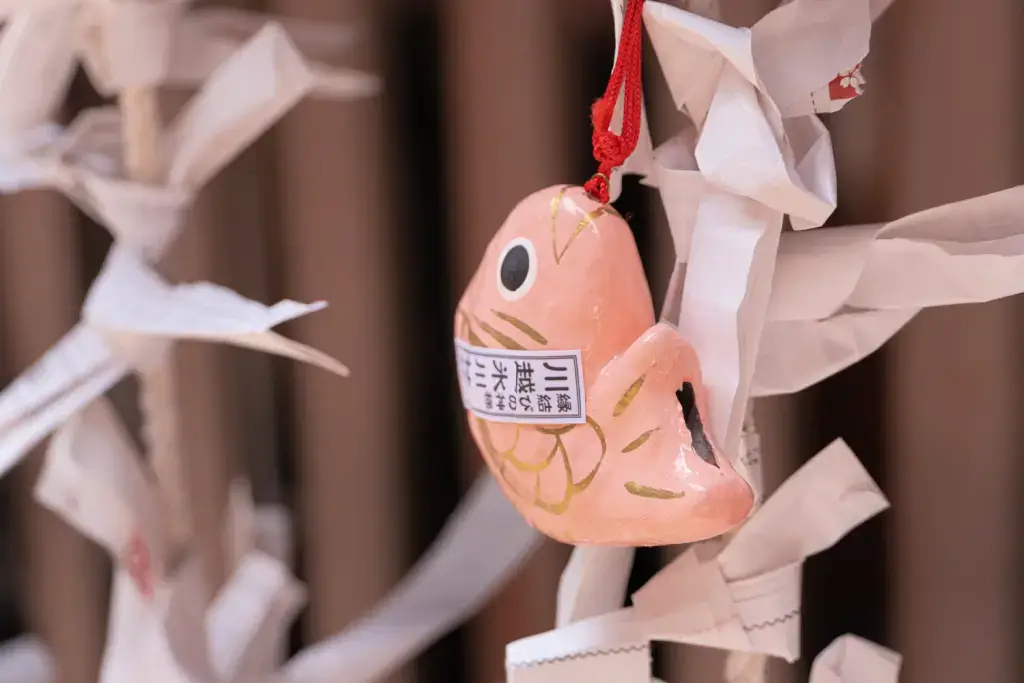
The predictions were traditionally written in waka, Japanese poetry that shows the connection between the divine and the world. Over time, it evolved into a cherished ritual for seeking guidance for important decisions or to see what the future holds. As omikuji became more popular, it blended with Shinto customs, especially during the Edo period (1603-1868). Shrines and temples became key places where people sought this tradition, often during significant occasions like New Year’s.
Are you looking for great snacks for the New Year? Check out Sakuraco! Sakuraco delivers traditional Japanese snacks, teas, and sweets from local Japanese makers directly to your door so you can enjoy the latest treats directly from Japan!

How do I get an omikuji?
To draw an omikuji, visit any shrine or temple in Japan, as most provide them. You will find a special area called the omikuji corner, where you can make a modest offering (typically between 100-300 yen) to receive your fortune. Once you’ve donated, it’s time to draw your sacred lot! For traditional methods, you’ll shake a container filled with sticks until one falls out. The number on your stick corresponds to a drawer or slot where you can grab your fortune slip. You’ll choose one from a box if you get a rolled-up paper instead of a stick.
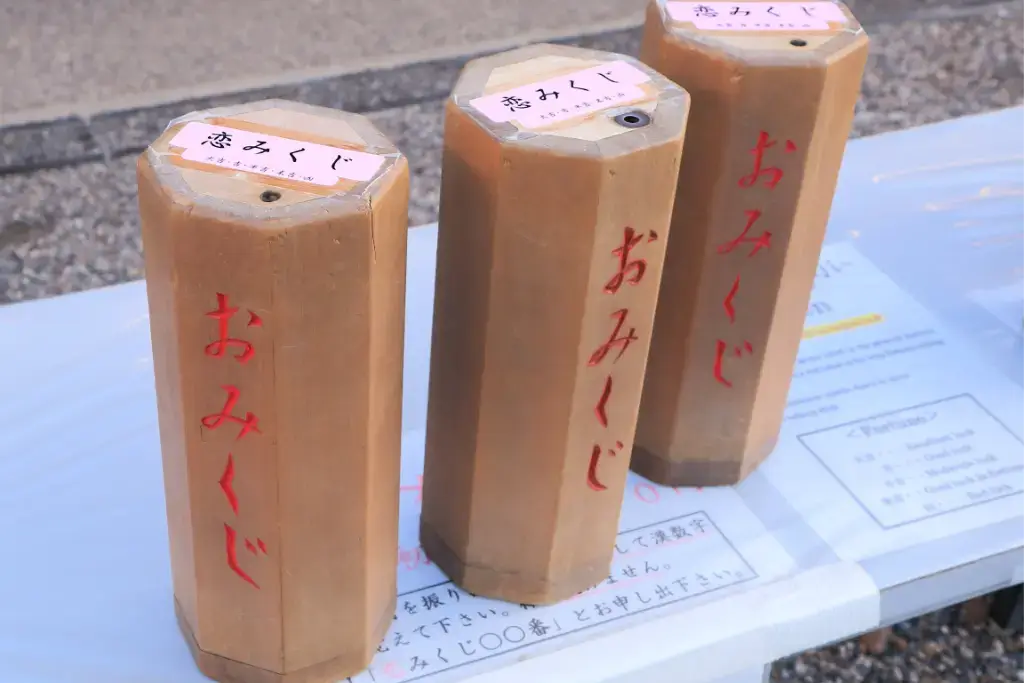
Now, let’s talk about the luck you might get on your lot. The top of your fortune slip shows your fortune with fun kanji!
- Daikichi (大吉): great luck and success.
- Chukichi (中吉): good fortune with a few challenges.
- Shokichi (小吉): a small blessing.
- Suekichi (末吉): good things are coming, but slowly.
- Kyo (凶) or Daikyo (大凶): bad luck, but it’s a reminder to stay positive and overcome difficulties.
What do I do if I get a bad fortune?
If you draw a bad fortune from your omikuji, it’s nothing to be upset about! There’s a unique custom that turns this experience into something meaningful. Most shrines and temples have designated areas to tie your bad fortune slip. These spots might include ropes, wires, or fences, often near the omikuji corner. This practice is rooted in Japanese culture, where tying the paper helps leave the bad luck behind at the sacred grounds, ensuring it doesn’t follow you home.

In some places, these tied omikuji papers create a beautiful display, almost like a garden of wishes. Some shrines even collect these bad fortunes later for ritual burning, a purification practice to cleanse the bad luck symbolically. While letting go of a misfortune, you can explore the peaceful grounds, admire the architecture, or purchase an omamori charm to invite good luck into your life.
Omikuji is an opportunity to connect with Japanese culture and customs. It adds excitement and hope to your visit to these sacred places, and the fun of trying your luck makes it a highlight for many tourists. It’s a fun tradition that turns a bad experience into an opportunity for growth. Whether your omikuji brings good luck or challenging times, it’s always a memorable experience that connects you to Japanese culture and traditions!
Why should I try to get an omikuji?
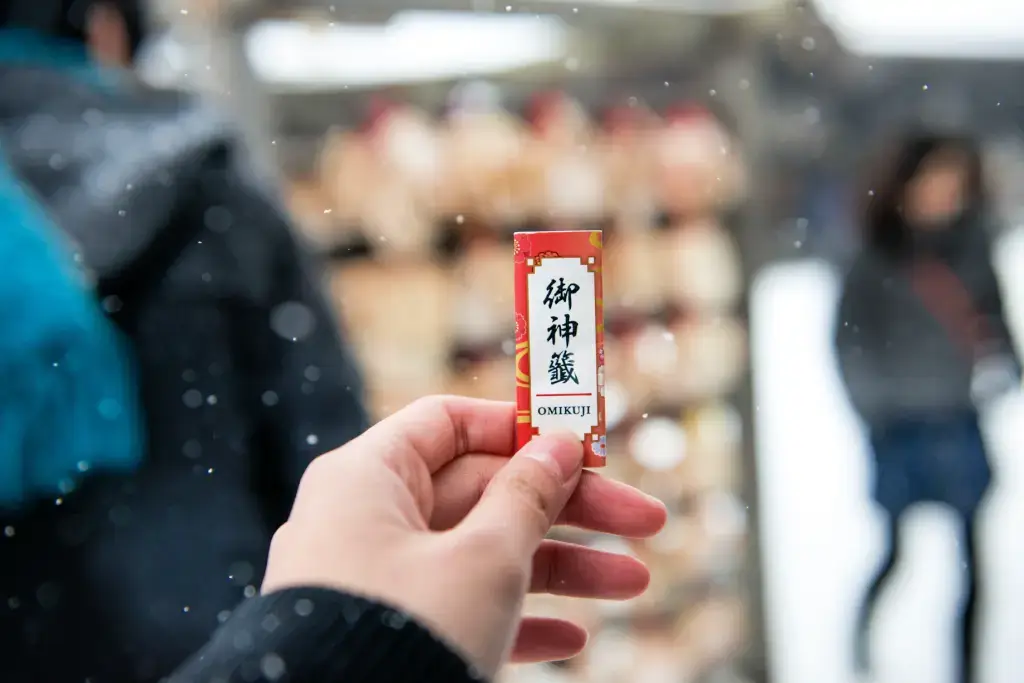
Trying an omikuji is a simple yet meaningful way to immerse yourself in Japanese culture and traditions. It’s not just about luck but about reflecting on life and finding inspiration, no matter the outcome. Whether it brings joy or a chance to grow, an omikuji offers a moment of connection to a rich cultural heritage. Many find trying their luck at a sacred site a memorable part of their visit since it adds depth to the experience. Have you ever tried something like this? Share your thoughts or experiences in the comments below!

